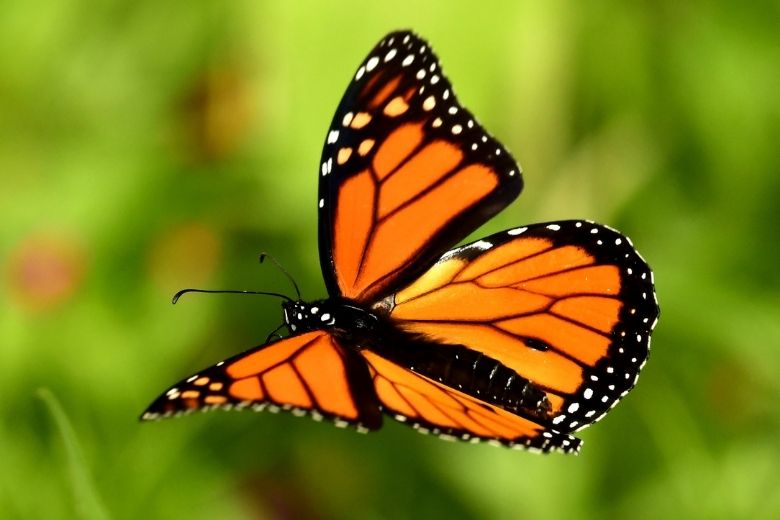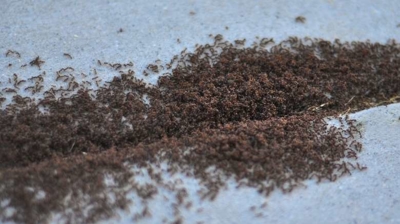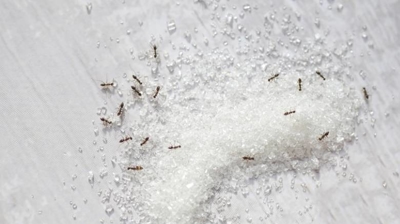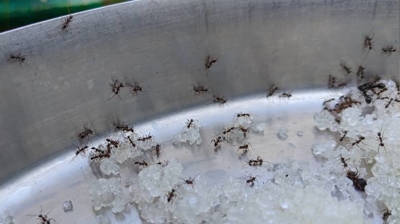
Butterfly Control Services

Are Butterflies Harmful?
While butterflies are generally admired for their beauty and are not typically regarded as pests, there are a few contexts in which they may be considered harmful:
- Agricultural Impact (Caterpillars as Pests): The larval stage (caterpillars) of many butterfly species can feed heavily on crops, vegetables, fruits, and ornamental plants. Species such as the Cabbage White Butterfly (Pieris rapae) are notorious agricultural pests, causing significant damage to cabbage, broccoli, cauliflower, and other brassicas. Large infestations can defoliate plants, reduce yields, and force farmers to increase pest management costs.
- Ornamental and Garden Plant Damage: Home gardeners may find butterfly caterpillars damaging prized ornamental plants, flowers, and shrubs. While a few caterpillars may not cause major harm, large populations can strip leaves and affect plant health and appearance.
- Forest and Ecosystem Balance: Certain species, if populations surge, can disrupt the natural balance of forests or local ecosystems by defoliating trees or shrubs. This can make plants more vulnerable to disease, pests, or environmental stressors.
- Invasive Species Concerns: In regions outside their native range, some butterfly species can become invasive. Their caterpillars may feed on plants not adapted to withstand such pressure, leading to ecological imbalance and threatening native species.
Butterflies themselves are generally harmless as adults, but their caterpillar stage is where harm can occur, particularly in agriculture, gardening, and when invasive species are introduced to non-native environments.
Learn more: Do Butterflies Bite?
Learn more: Are Butterflies Poisonous?
Butterfly Control
Although butterflies are often admired for their beauty, they can occasionally become a nuisance or even harmful in certain settings, especially when populations grow unchecked or when specific species pose risks to crops, gardens, or structures. Hiring our professional pest control services for butterflies may be necessary in the following situations:
- Protection of Gardens and Crops: Some butterfly species, particularly at the caterpillar stage, can cause significant damage to plants. Caterpillars feed on leaves, flowers, and crops, potentially defoliating plants, reducing yields, and harming landscaping investments. Our professionals can identify the species causing damage and implement targeted control methods that minimize harm to beneficial insects.
- Accurate Identification and Assessment: Not all butterflies or caterpillars are harmful, and misidentifying them can lead to unnecessary treatments. Our pest control experts can correctly identify the species, assess whether intervention is even required, and recommend the least disruptive approach. This prevents needless harm to beneficial pollinators while addressing the specific pest issue.
- Humane and Eco-Responsible Methods: We understand the importance of maintaining ecological balance. Instead of blanket chemical use, we employ eco-friendly and humane strategies, such as exclusion techniques, habitat modification, or targeted treatments, to control harmful species without endangering non-target wildlife.
- Protection Against Secondary Issues: Butterflies themselves are not directly harmful to humans, but large numbers—especially when they gather indoors or near sensitive areas—can create sanitation concerns, clog vents, or leave waste. Our professionals know how to prevent recurring infestations and protect structures from related problems.
- Preventive Solutions: Our professionals can help you take preventive steps, such as adjusting outdoor lighting that attracts butterflies and moths at night, sealing entry points to keep them out of buildings, and managing plantings to reduce vulnerability to caterpillar damage.
Attempting to manage butterfly-related issues on your own can lead to ineffective results or unintended ecological harm. Our professionals provide lasting, safe solutions while ensuring that your property, garden, and surrounding ecosystem remain healthy.
What Do Butterflies Look Like?
Butterflies exhibit a diverse range of appearances, but they share some common characteristics. Here is a detailed description of what butterflies generally look like:
- Wings: Butterflies have two pairs of wings, making a total of four wings. These wings are covered in thousands of tiny, overlapping scales, which give them their color and patterns. The wings are often broad and triangular in shape.
- Coloration: Butterfly wings come in a dazzling array of colors and patterns. Some species have vibrant hues like bright blues, reds, and yellows, while others have more subdued colors like browns and grays. The coloration can vary greatly between species and can also differ between males and females of the same species.
- Antennae: Butterflies have two long, slender antennae on their heads. These antennae serve as sensory organs, helping them detect environmental cues such as scents and temperature.
- Body: The body of a butterfly is divided into three parts: the head, thorax, and abdomen. The head houses the eyes, antennae, and a proboscis, a long, coiled tube used for sipping nectar. The thorax is where the wings and six legs are attached. The abdomen contains the digestive and reproductive organs.
- Size: Butterfly size varies greatly, with wingspans ranging from less than an inch to over a foot, depending on the species. Some of the largest butterflies, like the Atlas Moth, can be quite impressive in size.
- Pattern: Butterfly wing patterns can include spots, stripes, eyespots, and intricate designs. These patterns serve various purposes, including camouflage, warning signals to predators, and mate attraction.
- Sexual Dimorphism: In many butterfly species, males and females exhibit differences in appearance. For example, males may have brighter colors or different wing patterns compared to females. These differences often play a role in courtship and mate selection.
- Legs: Butterflies have six jointed legs, which are covered in small spines. These legs are used for walking and clinging to surfaces.
- Proboscis: The proboscis is a specialized mouthpart that butterflies use to feed on nectar from flowers. When not in use, the proboscis is coiled up.
- Flight: Butterflies are renowned for their graceful and agile flight. Their wings beat in a figure-eight pattern, allowing them to hover, glide, and change direction rapidly.
There is incredible diversity among butterfly species, so while these characteristics are common, variations exist that make each species unique and captivating in its own way.
Where Are Butterflies Found?
Butterflies are found on every continent except Antarctica. Their distribution varies depending on the species and their ecological requirements. Here's a comprehensive overview of where butterflies are found:
- Tropical Regions: Tropical rainforests, savannas, and jungles, particularly in Central and South America, Africa, Southeast Asia, and the Pacific Islands, host a vast diversity of butterfly species. These regions offer a wealth of nectar-rich flowers, which support a high number of butterfly species.
- Temperate Regions: Butterflies are also prevalent in temperate zones. North America, Europe, and Asia have diverse butterfly populations. Some species, like the Monarch butterfly in North America, are known for their long-distance migrations.
- Deserts: Even arid regions like deserts are home to specialized butterfly species adapted to survive in harsh conditions. They are often found near water sources or plants that provide nectar.
- Mountains: Butterflies can be found at high altitudes in mountainous regions. They are adapted to the cooler temperatures and lower oxygen levels found at these elevations. Some well-known mountain butterfly species include the Alpine Butterfly and the Parnassius species.
- Grasslands and Prairies: Open grasslands, meadows, and prairies provide ideal habitats for many butterfly species, as they offer a variety of nectar sources and host plants for caterpillars.
- Coastal Areas: Coastal regions often support unique butterfly species that are adapted to the specific conditions found near the sea. Salt marshes, dunes, and coastal vegetation are home to these butterflies.
- Urban and Suburban Areas: Some butterfly species have adapted to urban environments and can be found in parks, gardens, and green spaces within cities. Urban butterfly gardening has become a popular way to attract and support these species.
- Islands: Many islands around the world have their own unique butterfly species due to isolation. These butterflies have often evolved in the absence of predators and have distinctive characteristics.
- Caves and Gorges: In certain regions, butterflies are found in caves and gorges, where they roost or hibernate during adverse weather conditions. The Pipevine Swallowtail is an example of a butterfly species that uses caves for protection.
- Migratory Routes: Some butterflies, like the Monarch butterfly, undertake long-distance migrations across continents. They can be found along their migration routes, which may span thousands of miles.
Specific butterfly species have varying habitat requirements, including preferred plants for nectar and host plants for caterpillars.
Butterfly Diet
Butterflies have specialized feeding preferences and diets that change as they progress through different life stages. What butterflies eat can vary depending on their age and species. Here's a detailed breakdown of their diet at various life stages:
Egg Stage:
Butterfly eggs are laid on or near specific host plants, which are chosen by the female butterfly based on the species. The primary purpose of the egg stage is to provide a secure location for the hatching caterpillar to find its first meal.
Larva Stage (Caterpillar):
Caterpillars are exclusively herbivorous and feed on the leaves, stems, flowers, or fruits of their host plants. Different butterfly species have distinct host plant preferences. For example, Monarch caterpillars feed on milkweed plants, while Swallowtail caterpillars may prefer plants like parsley, dill, or citrus trees. Caterpillars have strong mandibles (mouthparts) that allow them to chew and consume plant material. They often have specialized adaptations to help them process and digest plant matter, such as silk-producing glands for building protective shelters.
Pupa Stage (Chrysalis):
During the pupal stage, butterflies do not eat. Instead, they undergo a remarkable transformation inside the chrysalis. They rely on energy and nutrients stored from their caterpillar stage to fuel their metamorphosis.
Adult Stage (Butterfly):
Adult butterflies primarily feed on nectar from flowers, which provides them with essential carbohydrates and sugars for energy. Their mouthparts have evolved into a long, coiled tube called a proboscis, which they use to sip nectar from flowers. Butterflies are selective in their choice of nectar sources, and they are often attracted to brightly colored flowers with tubular shapes that allow them to access the nectar. In addition to nectar, some butterflies may also feed on other liquids, such as rotting fruit juices, tree sap, or mineral-rich puddles. This behavior is known as "puddling."
While adult butterflies rely primarily on nectar, their specific nectar sources can vary depending on the availability of flowers in their habitat. Furthermore, some butterflies have unique adaptations or behaviors, such as sipping tears from the eyes of reptiles or drinking sweat from humans, which provide them with additional nutrients and minerals not found in nectar.
Learn more: What Do Butterflies Eat?
Butterfly Life Cycle
The life cycle of butterflies, known as metamorphosis, consists of four distinct stages: egg, larva (caterpillar), pupa (chrysalis), and adult. This process is a remarkable example of complete metamorphosis and allows butterflies to undergo a dramatic transformation during their development. Here is a detailed explanation of each stage:
Egg Stage:
The butterfly life cycle begins when a female butterfly lays eggs on a suitable host plant. The choice of host plant depends on the species. The eggs are often small, round, or oval, and they are usually attached to leaves or stems of the host plant. The female butterfly may lay multiple eggs over a period of time, depending on environmental conditions and her lifespan.
Larva Stage (Caterpillar):
Once the eggs hatch, they give rise to the larval stage, which is the caterpillar. Caterpillars are specialized for eating and growing. Caterpillars have a segmented body with six true legs and several pairs of fleshy, false legs called prolegs. They feed voraciously on the host plant's leaves, stems, or flowers, growing in size considerably during this stage. The caterpillar molts (sheds its exoskeleton) multiple times as it grows, revealing a new, larger skin each time. Caterpillars have various patterns and colors, often designed for camouflage or mimicry to deter predators.
Pupa Stage (Chrysalis):
After reaching a certain size and completing their larval development, caterpillars enter the pupal stage, also known as the chrysalis. Inside the chrysalis, the caterpillar undergoes a remarkable transformation through a process called metamorphosis. During this time, the caterpillar's body undergoes a complete restructuring, breaking down into a soupy substance and then reassembling into the adult butterfly's body form. The chrysalis is often camouflaged and can vary in color and shape depending on the species.
Adult Stage (Butterfly):
The final stage of the butterfly life cycle is the emergence of the adult butterfly from the chrysalis. The newly emerged butterfly often has crumpled and wet wings, which it must expand and dry before it can fly. Once the wings are fully expanded and dry, the butterfly can take flight and begin its adult life. The primary goal of the adult stage is reproduction. Butterflies seek out nectar from flowers as their primary food source and engage in courtship and mating. The adult butterfly's lifespan can vary greatly among species, from just a few days to several months, depending on factors like predation, environmental conditions, and species-specific characteristics. This intricate life cycle allows butterflies to adapt to various ecological niches and ensures their survival. Each stage serves a specific purpose in their development and contributes to their ecological roles as pollinators and members of various ecosystems.

Hear From Our Happy Customers
-
"Professional & Considerate"
I’m pleased with Miche services. Jarvis came today. Professional and considerate. Thank you!
- Judy B. -
"Wonderful Service"
Wonderful service. Jarvis is great. Took care of everything I needed. Thank you!
- Henry P. -
"Exceeds Expectations"
I can’t say enough positive things about this company... The tech that came out, Jarvis went above and beyond my expectations. Thank you guys, I will continue using your services.
- Jake M. -
"Great Communication"
Tech was on time, communication was great, and he accommodated my needs.
- Alonzo W. -
"Very Knowledgeable"
The tech that arrived was courteous, professional, and very knowledgeable. He was Great.
- Uerial I. -
"Fantastic & Patient"
Jarvis was fantastic and patient. He answered my questions with an in-depth explanation and addressed all of my areas of concern. Would love for him to be my assigned tech going forward. Well done!
- Yonnette M.



